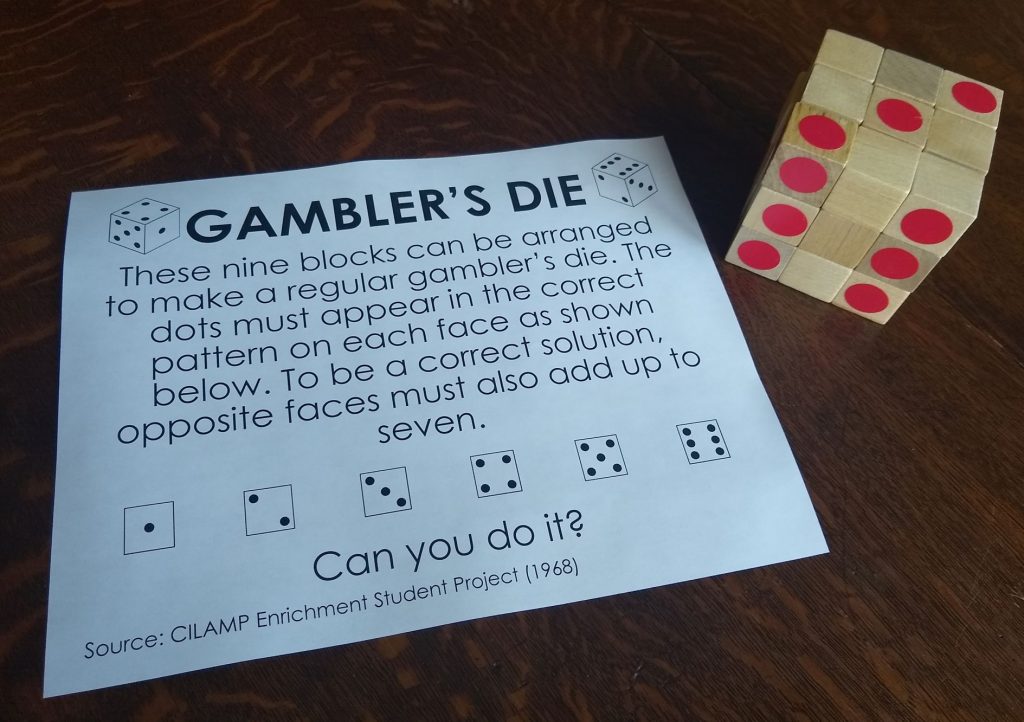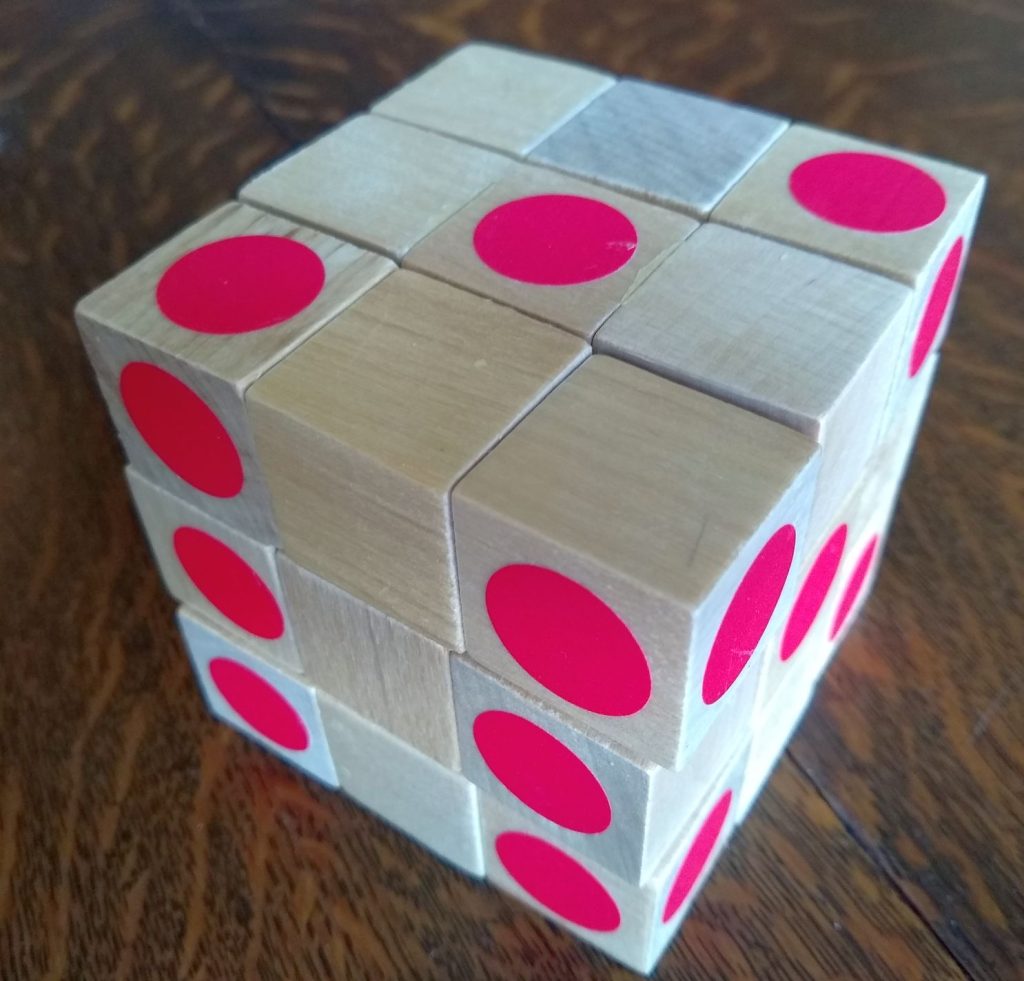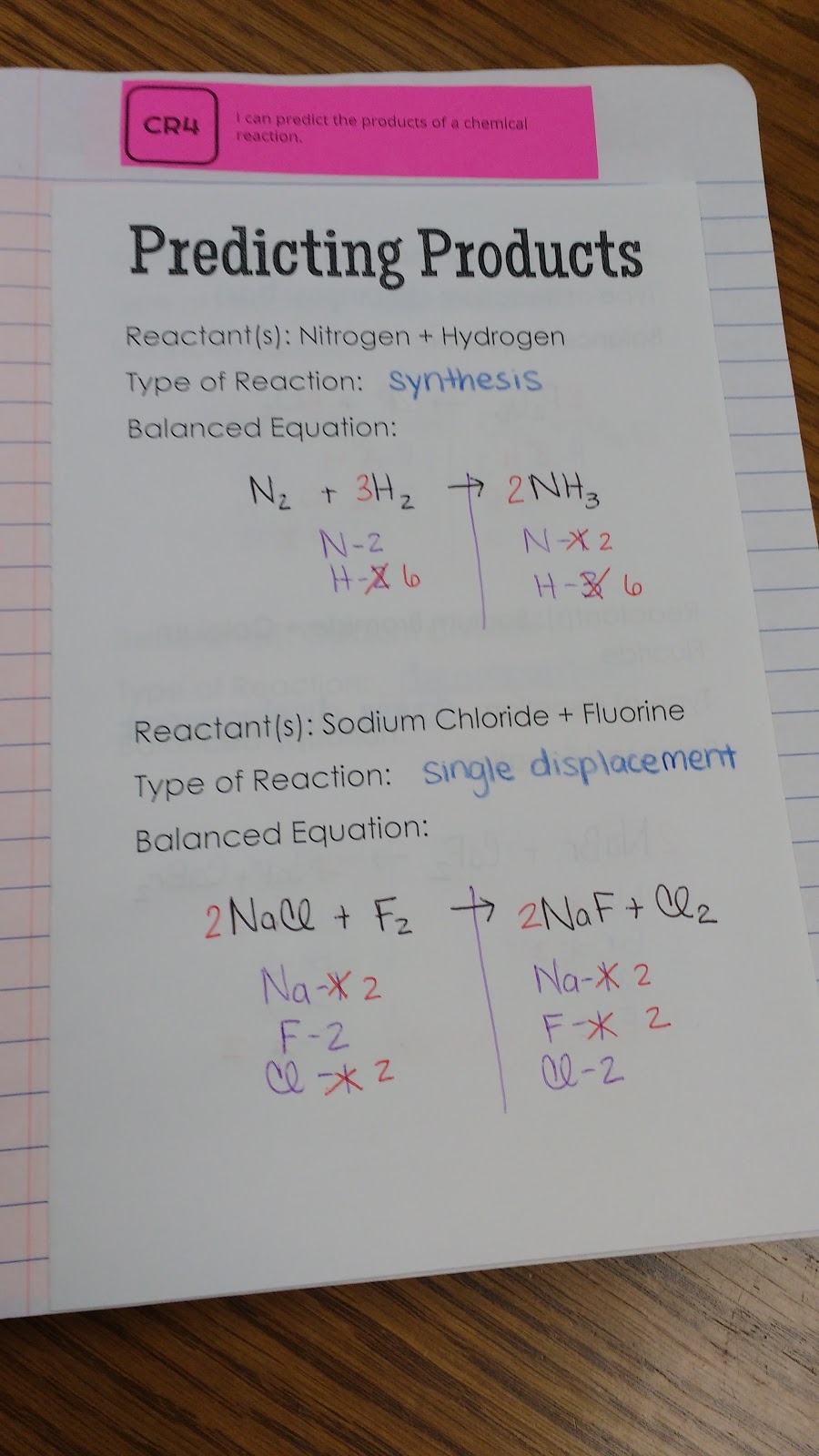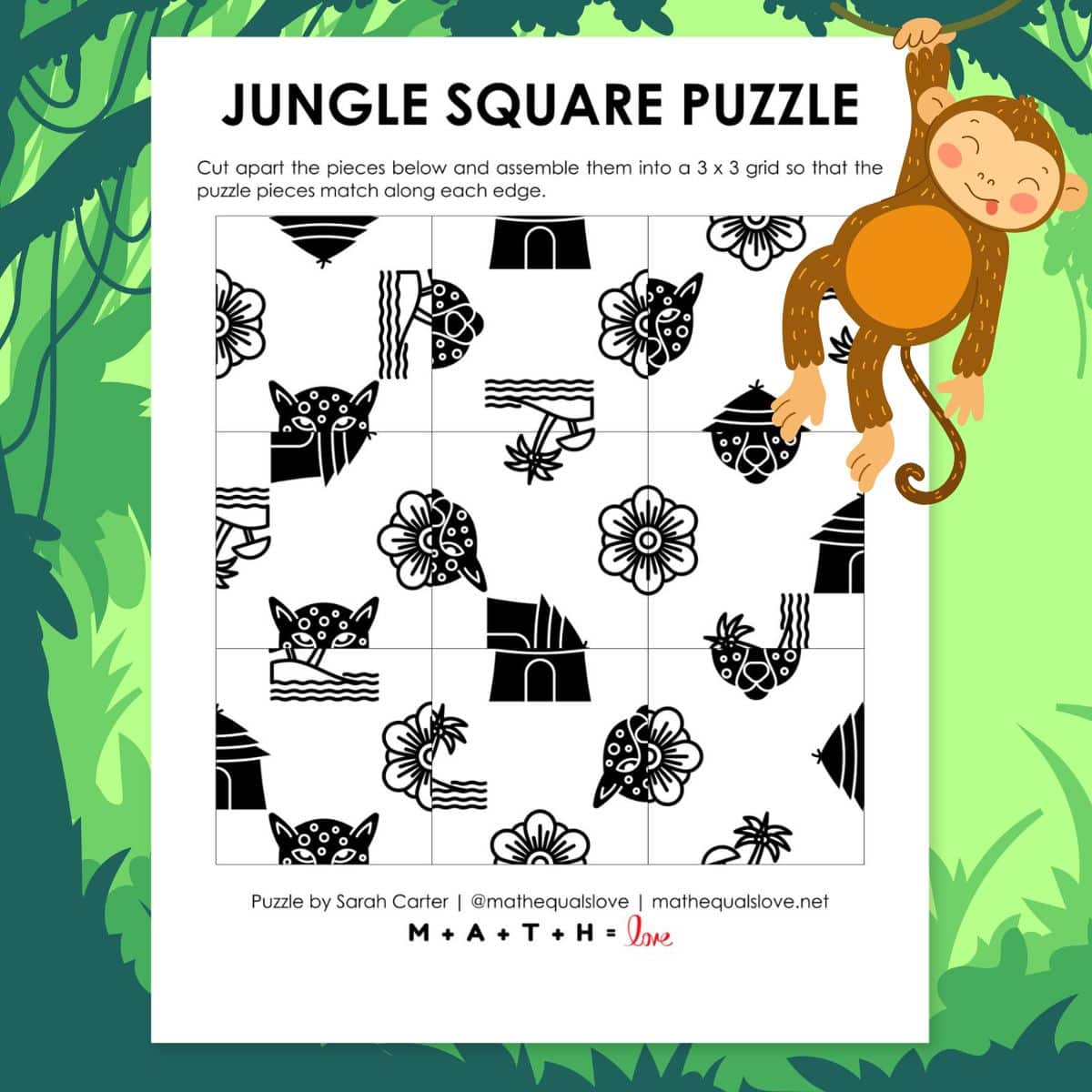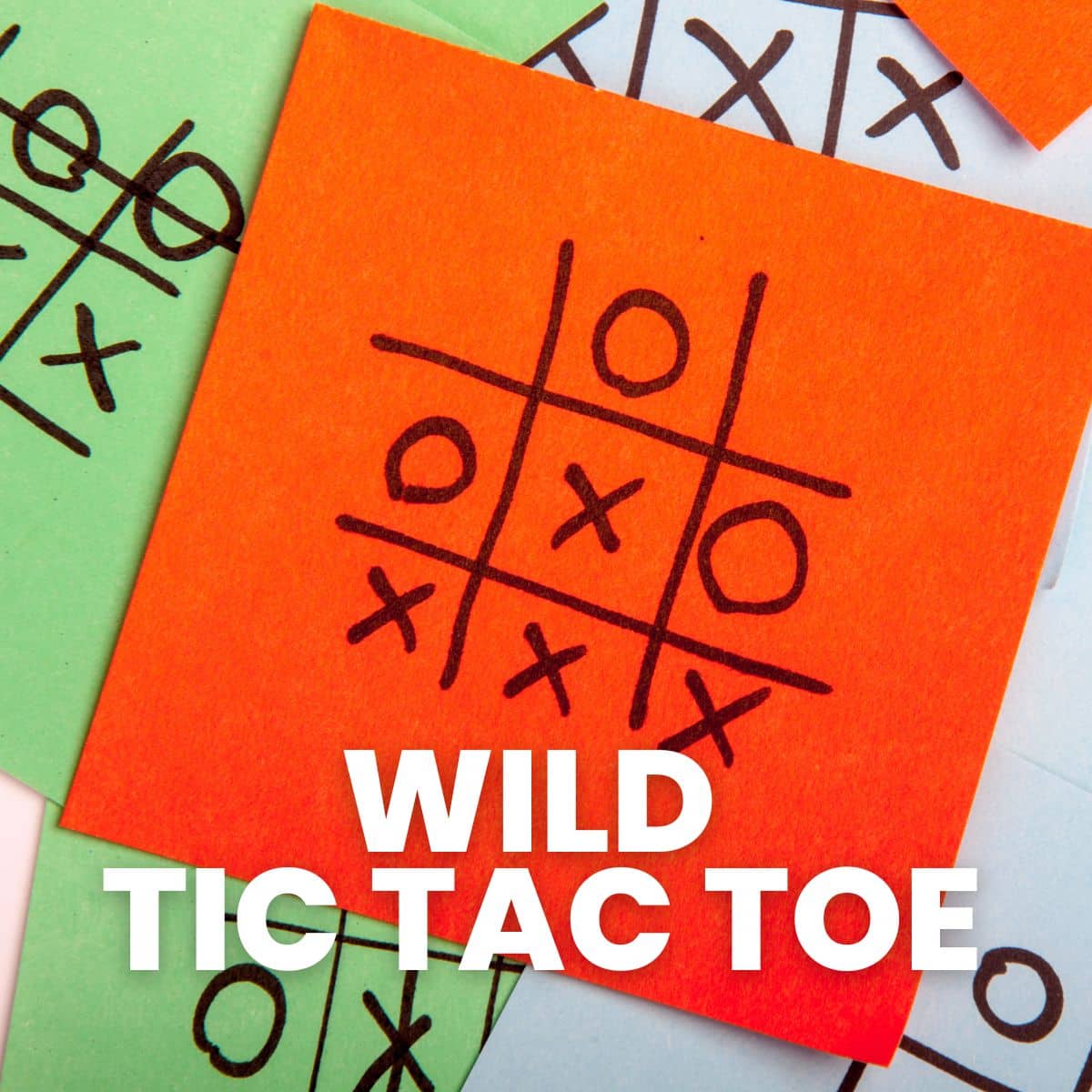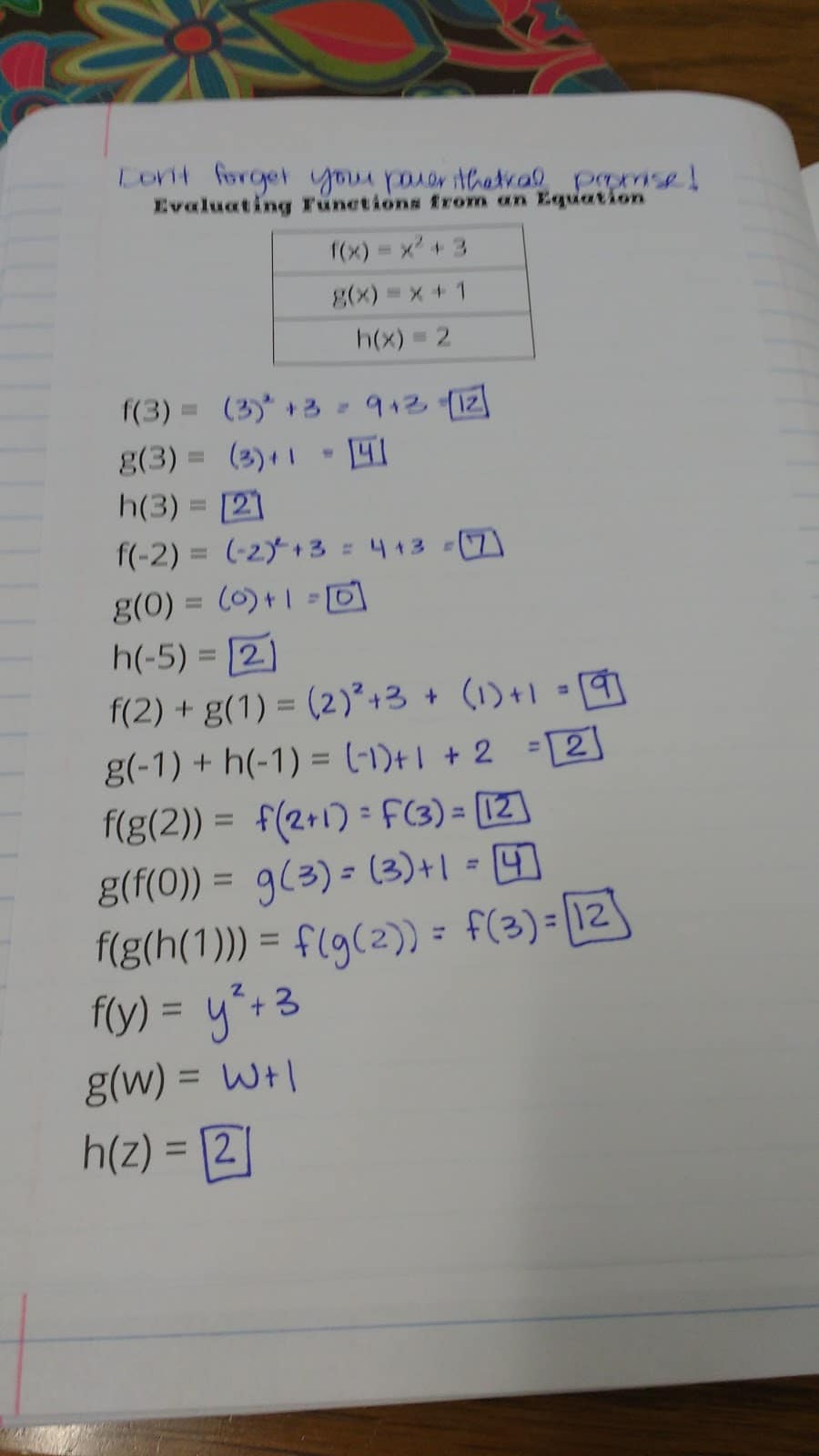Gambler’s Die Puzzle
This blog post contains Amazon affiliate links. As an Amazon Associate, I earn a small commission from qualifying purchases.
While researching the SOMA Cube a few years ago, I ran across this Gambler’s Die Puzzle that can be made from nine rectangular blocks of wood. These nine blocks can be arranged to make a regular gambler’s die (singular of dice).
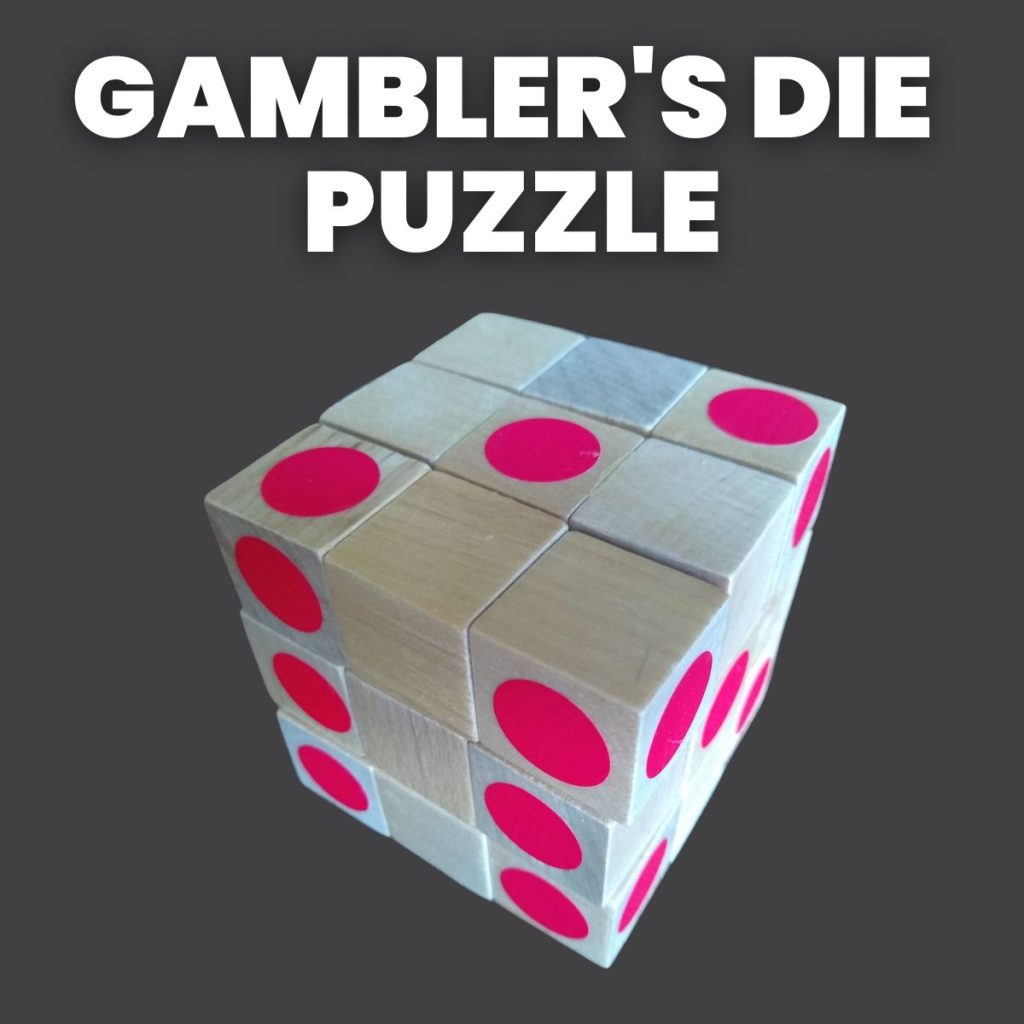
The dots must appear in the correct pattern on each face. To be a correct solution, opposite faces must also add up to seven.
I didn’t have nine rectangular blocks, so I decided to use 27 one inch wooden cubes. I had some of these leftover from crafting my SOMA Cube, 3 Immovable Pentablocks Puzzle, DIY Instant Insanity Puzzle, and Genius Blocks.
This puzzle can be found in a collection of Enrichment Student Projects from 1968. They were published by CILAMP – Central Iowa Low Achiever Mathematics Project.
I just used the abbreviation CILAMP when citing the source on the instructions since I don’t think anyone would use a name like this for any teaching project anymore.
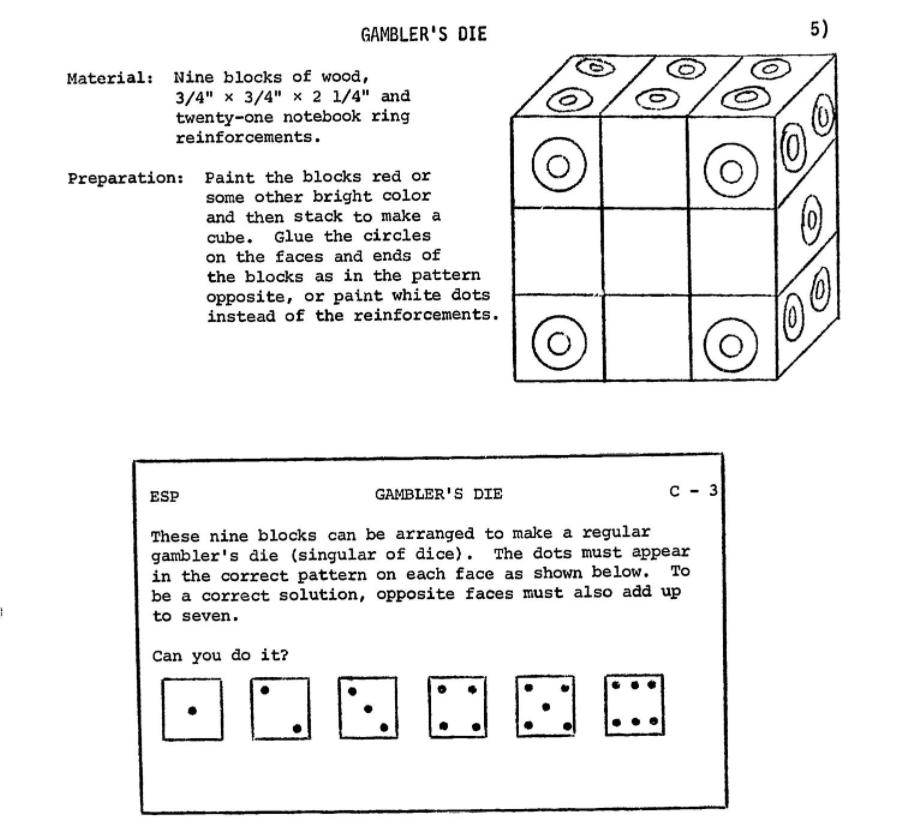
To start building my gambler’s die puzzle, I arranged my 27 wooden cubes into a 3 x 3 cube. The original instructions suggested using notebook ring reinforcements to create the dots on the die. I chose to use dot stickers instead.
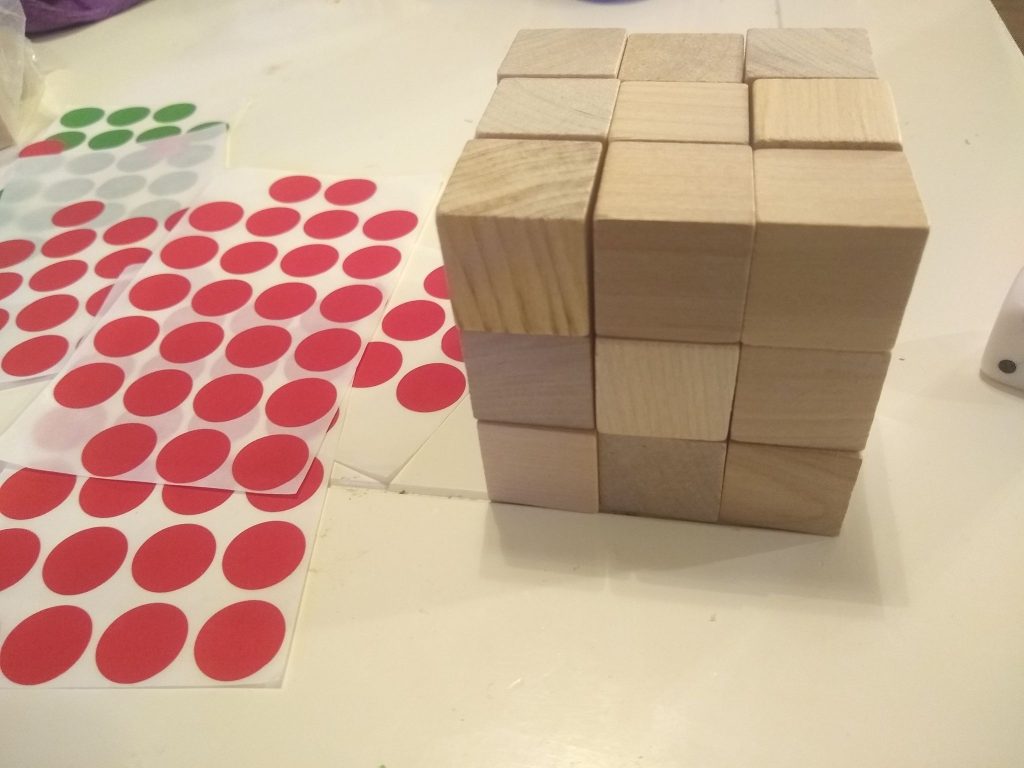
I used an actual die to keep myself from making any mistakes while creating my jumbo die puzzle.
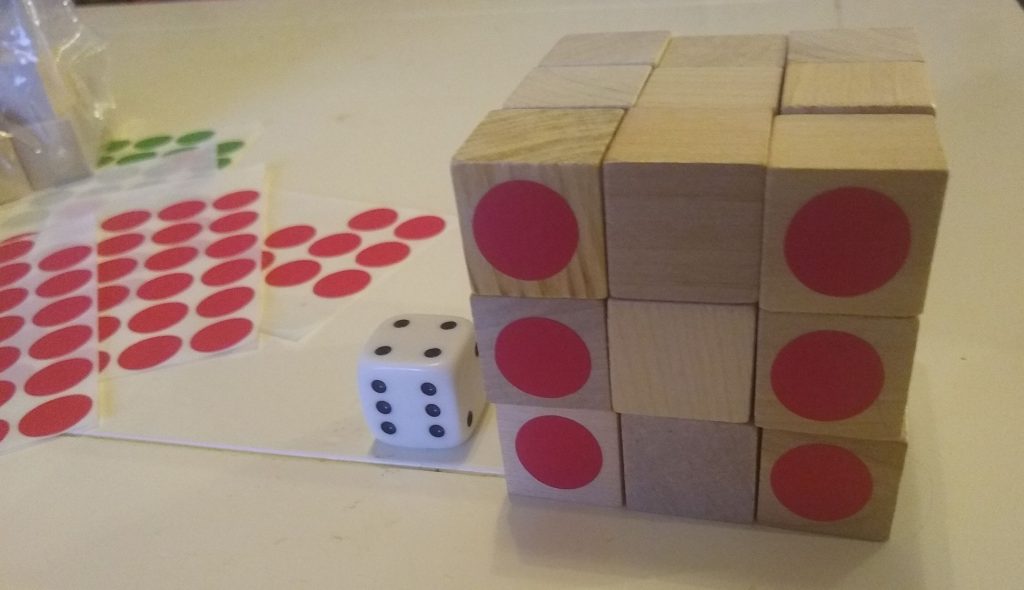
I did have to get a bit of help from my husband to add the stickers to the bottom of the die.
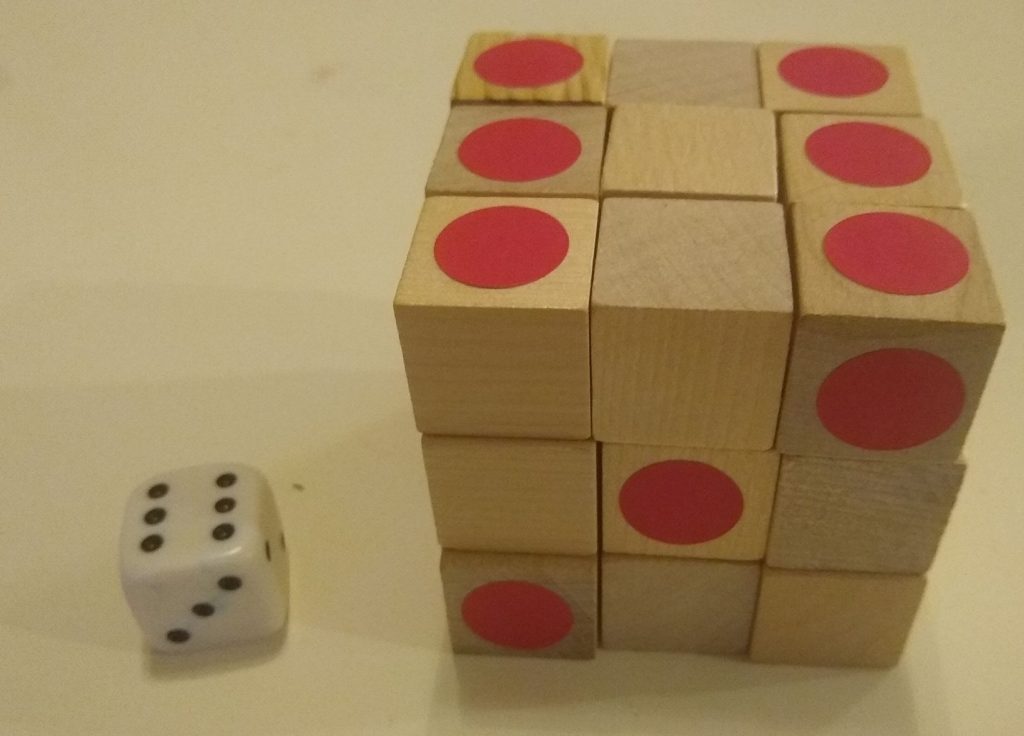
Next, I used Mod Podge to seal down the dot stickers and water-proof my puzzle.
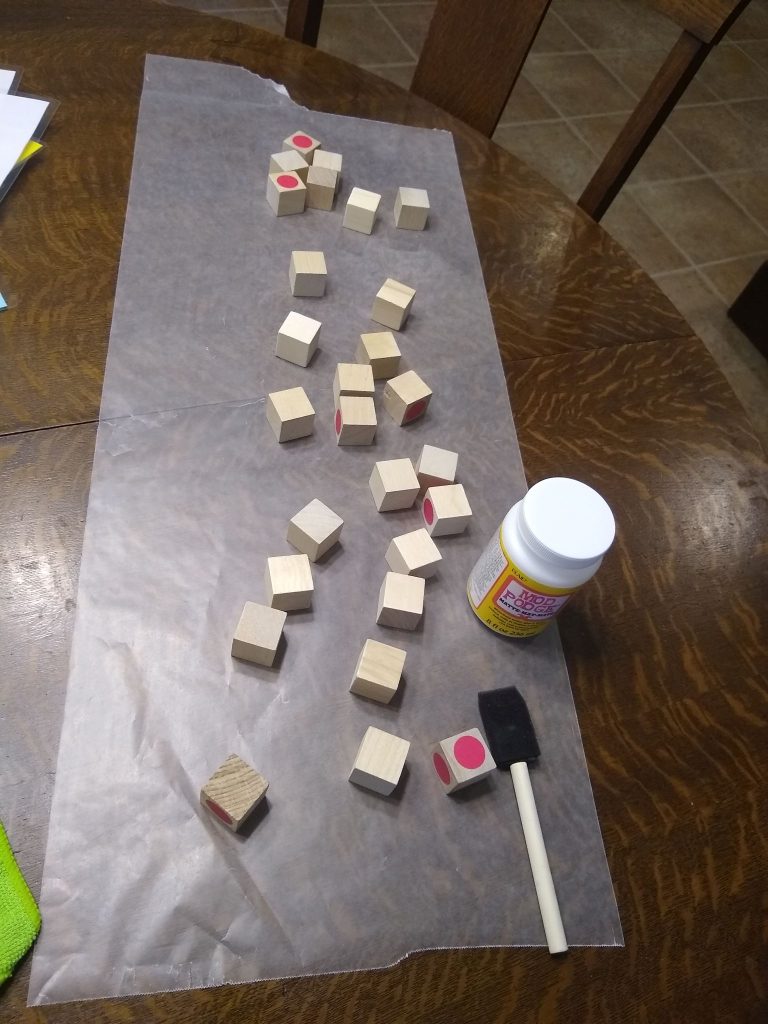
After the Mod Podge dried, I reassembled the cube and used wood glue to glue the pieces together into strips of three.
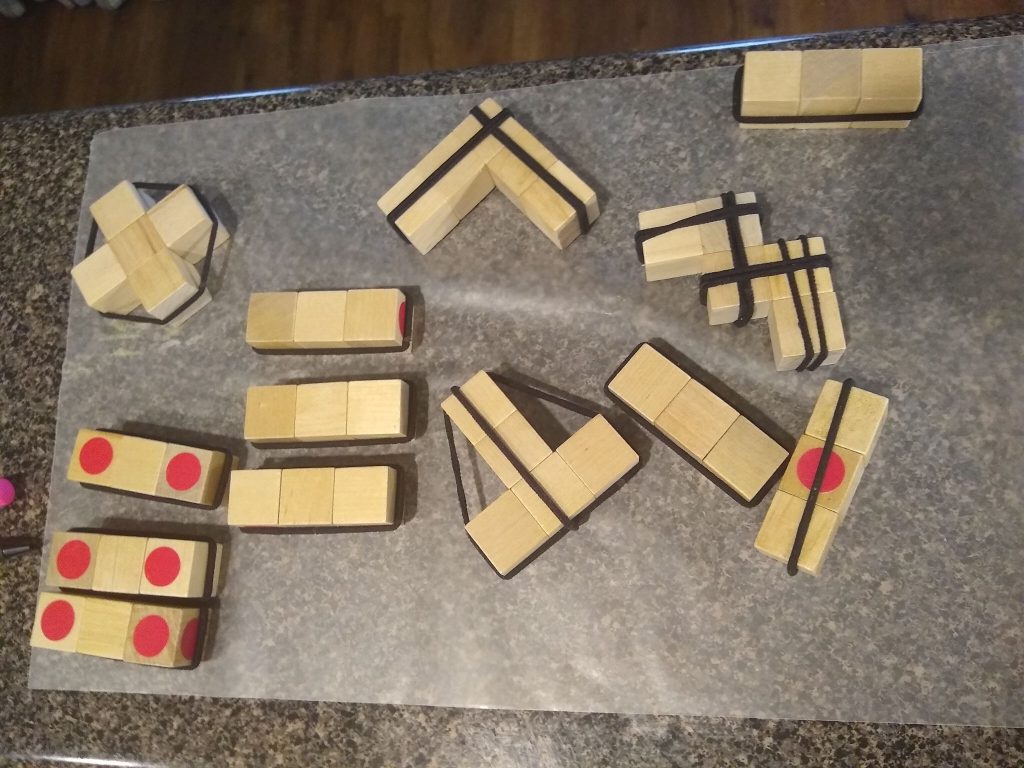
In retrospect, I probably should have done this FIRST before I put the stickers on!
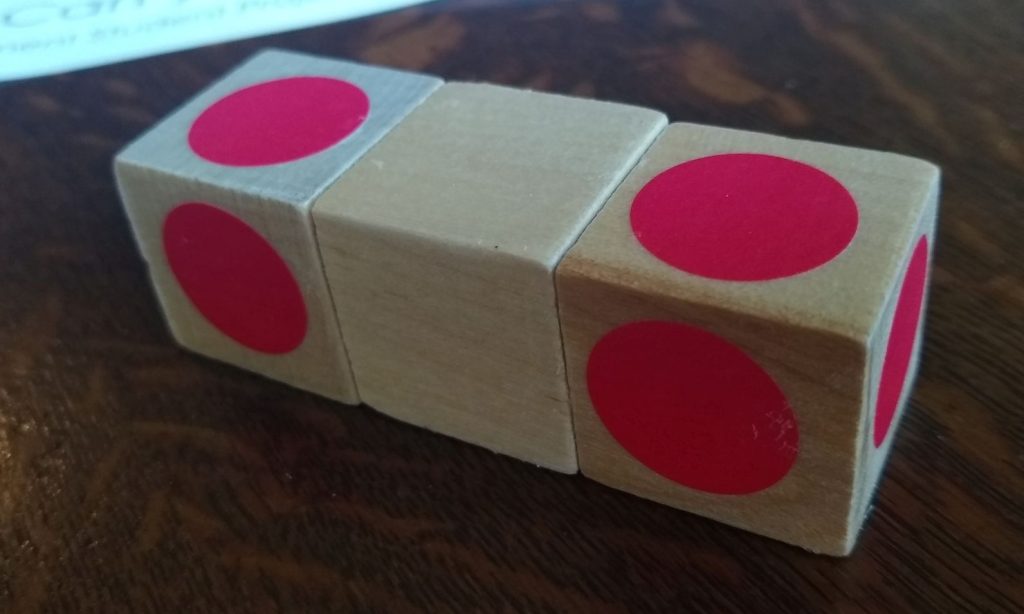
While I waited for everything to dry, I typed up a set of instructions to put out in my classroom with the Gambler’s Die Puzzle.
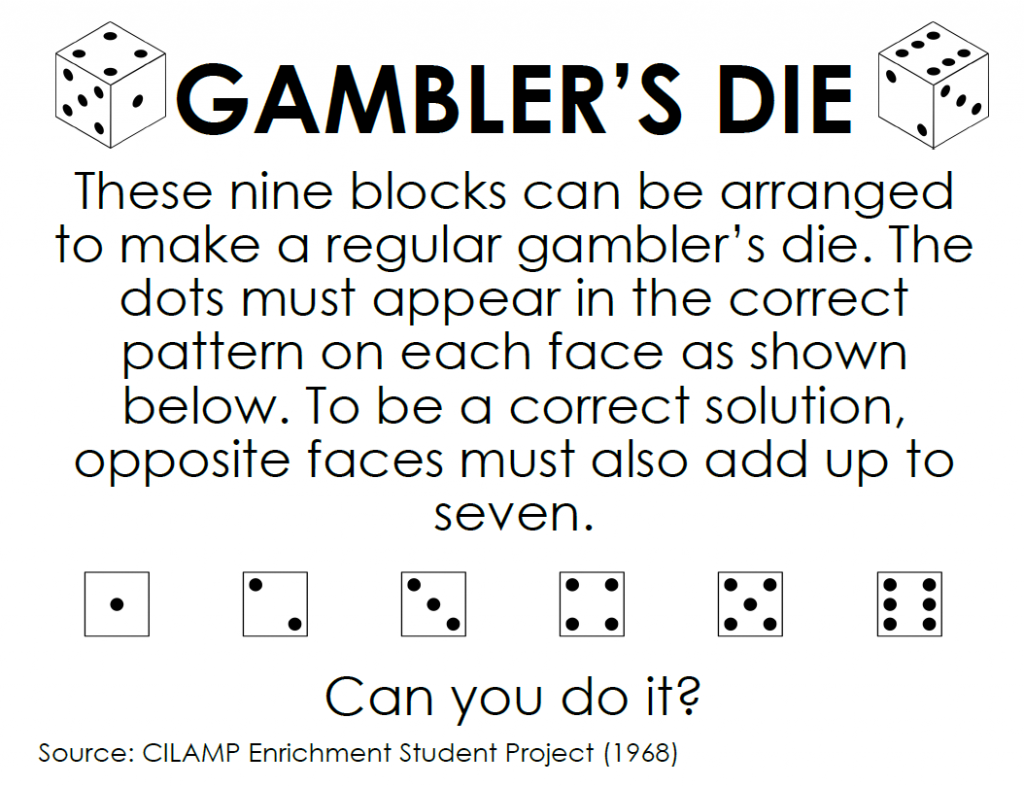
Here’s my finished product:
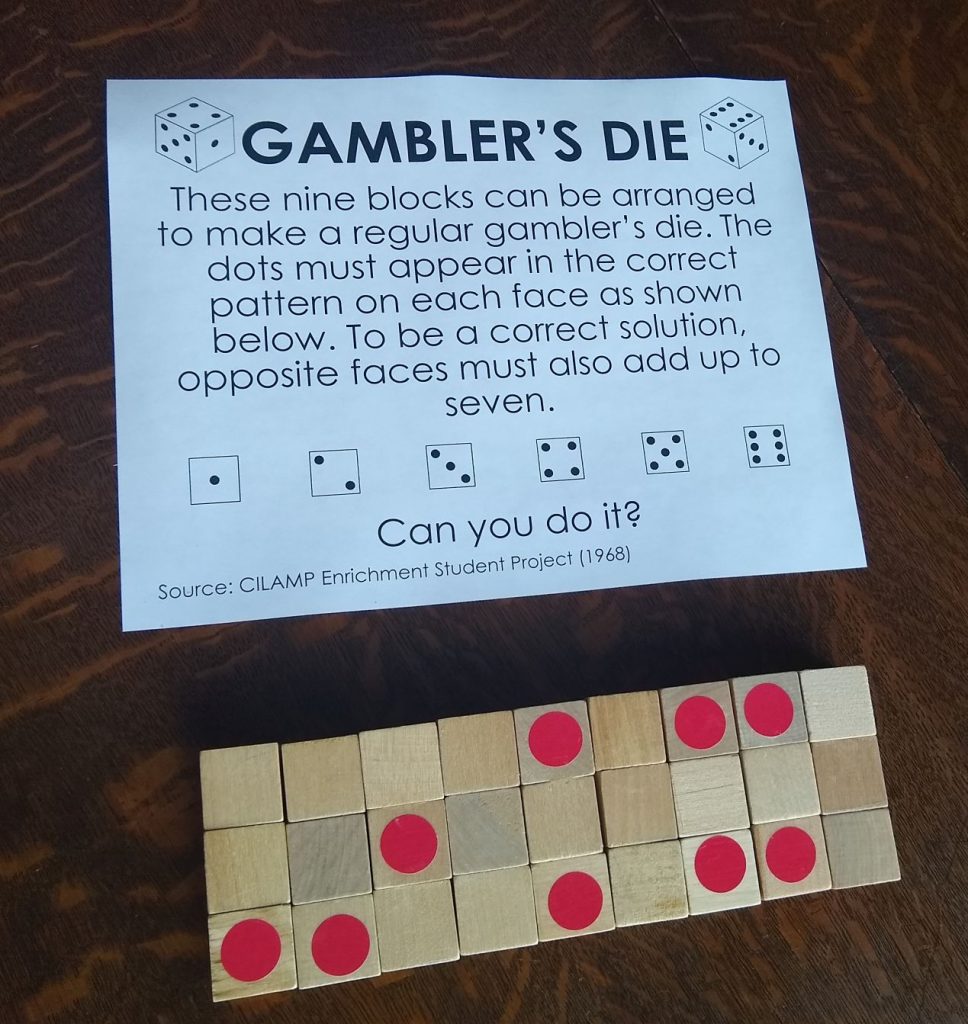
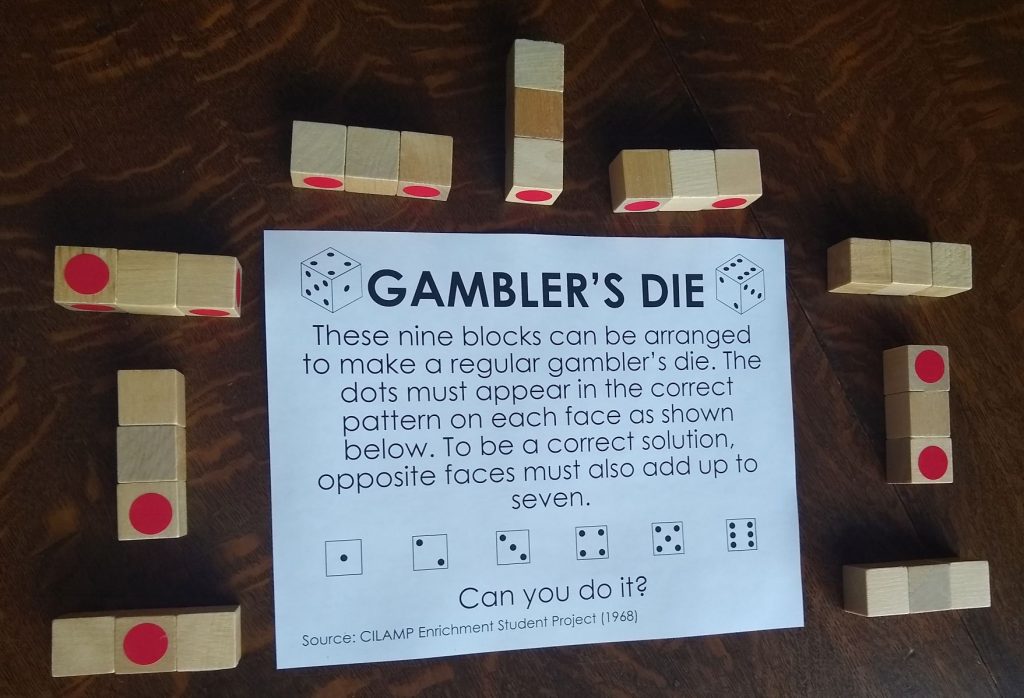
It was a relief when I was able to rebuild the puzzle and verify that it worked!
